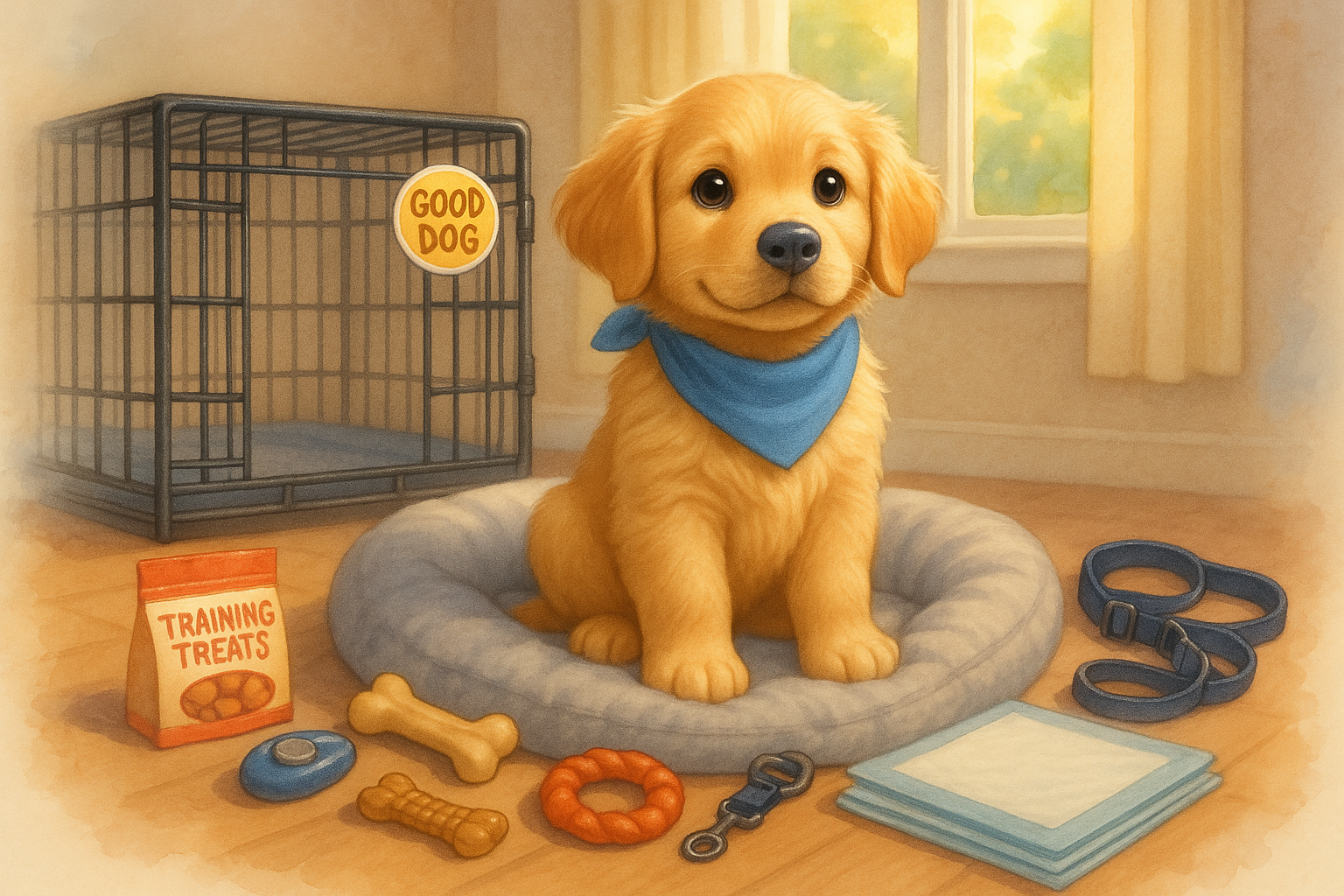How to Train a Puppy: The First 10 Things You Need to DoYour no-fluff, tail-waggin’ guide to a well-behaved pup—with everything I wish I’d known from day one.
- 40 Views
- 20startup23
- March 26, 2025
- Training & Behavior
🎯 Amazon Puppy Training Must-Haves (Affiliate Picks)
Let’s be real—training a puppy without the right tools is like trying to bake cookies without an oven. These are the exact game-changers I used and swear by when learning how to crate train your puppy:
- High-Value Puppy Training Treats – essential for reward-based learning
- Adjustable Dog Crate with Divider – perfect for crate training a puppy at night
- No-Tangle Leash + Harness Combo – made our first leash walks drama-free
- Chew-Proof Puppy Toys – stopped my furniture from becoming a chew buffet
- Puppy Potty Training Kit (Pads + Bells) – helped speed up the housebreaking process
- Dog Clicker Training Set – for precise timing in positive reinforcement training
- Comfy, Calming Puppy Bed – taught my pup to settle at night and feel secure
🛒 As an Amazon Associate, I earn from qualifying purchases—thank you for supporting the blog while spoiling your pup the right way!
Start with Structure: Build a Puppy Training Routine
Puppies are like toddlers—they need structure to thrive. When I brought my puppy home, I quickly realized the chaos wasn’t cute after Day 2. I created a daily rhythm for meals, potty breaks, naps, and training sessions using high-value puppy treats, which was a total game-changer.
Master Crate Training Early
Think of the crate as your pup’s personal bedroom—not doggie jail. Crate training helped my puppy sleep through the night, feel safe, and stop trying to destroy the house while I showered. I used this adjustable dog crate with divider to grow with my puppy. I also added a calming puppy bed to help him feel extra secure.
Potty Training Requires Patience (and Strategy)
Nothing tests your patience like stepping in a puddle with your socks on. I quickly learned that puppy potty training kits with pee pads and bells make housebreaking faster and less frustrating. I also kept treats handy by the door to instantly reward successful potty trips.
Positive Reinforcement = Your Puppy Training Superpower
Yelling doesn’t teach—it confuses. When I switched to clicker training for puppies, my puppy became more eager, confident, and responsive. Every good behavior got a treat and a click—and it was like magic.
Leash Training Takes Time—But It’s Worth It
My first leash walk was a full-body workout I didn’t sign up for. But once I got a no-tangle leash and harness combo, it was a game-changer. I started leash training in the yard first, using treats every few steps to reward good behavior.
Teach Basic Commands Immediately
Even 8-week-old puppies can learn sit, stay, and come. I used my puppy treats and clicker set consistently to reward every successful attempt. Within a week, my puppy could sit on command—and more importantly, he wanted to listen.
Puppy-Proofing = Peace of Mind
Trust me, your puppy will find that lone shoe under the bed and claim it like treasure. I stocked up on chew-proof puppy toys and kept them in every room. I also used baby gates and tucked away cords so my little explorer stayed safe and my stuff survived.
Nip the Nipping with Smart Redirection
Puppy teeth are like tiny shark fangs. Every time my puppy nipped, I immediately redirected him with a safe chew toy. It helped to yelp like a pup (yes, really!) and then praise him when he switched to a toy.
Socialize the Right Way, Right Away
Socializing isn’t just about playing with other dogs—it’s about building confidence around people, sounds, smells, and textures. I used high-reward treats during every new experience to make sure my pup formed positive associations.
Calm Greetings Prevent Chaos
Jumping was adorable at 10 pounds—not so much at 60. Teaching calm greetings with a sit-stay cue became a daily practice. And when I had to leave him alone, I’d give him a calming chew toy or stuffed Kong to keep him busy and prevent separation anxiety.
Final Thoughts: Be the Calm, Confident Leader Your Puppy Needs
I’ve been there. The accidents, the crying (both of us), the “what have I done?” moments. But with consistency, the right tools, and a lot of treats, you will raise a puppy who listens, trusts, and loves being by your side.
